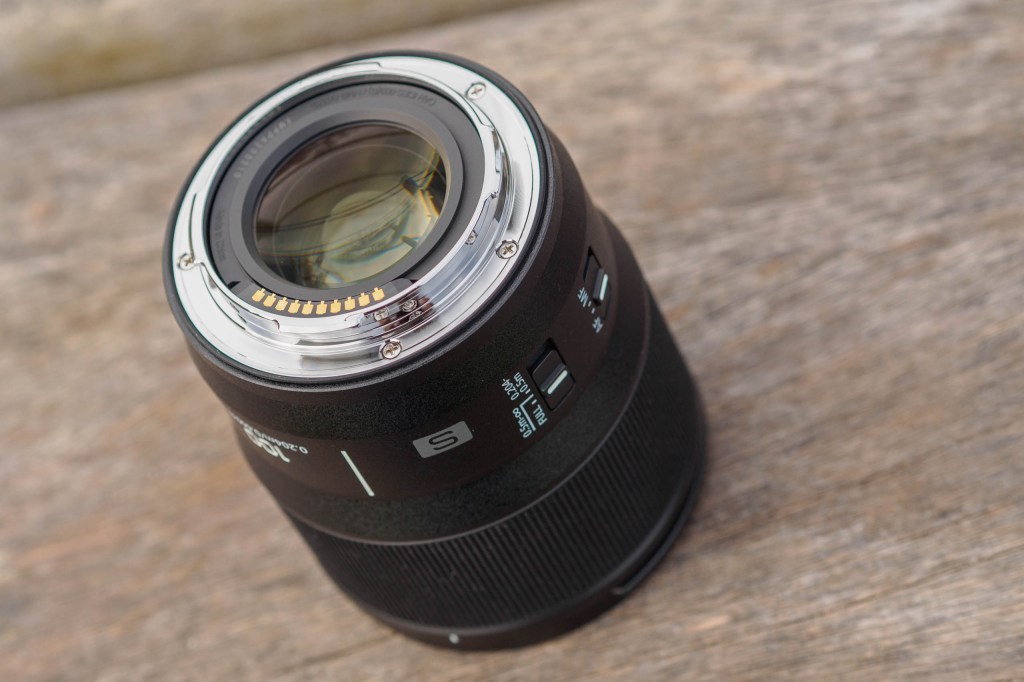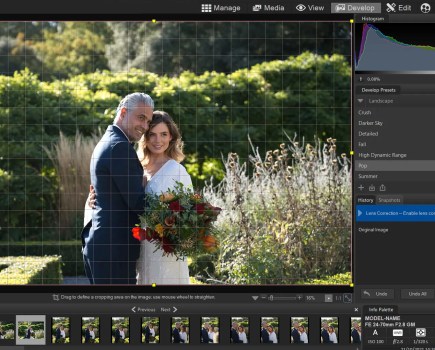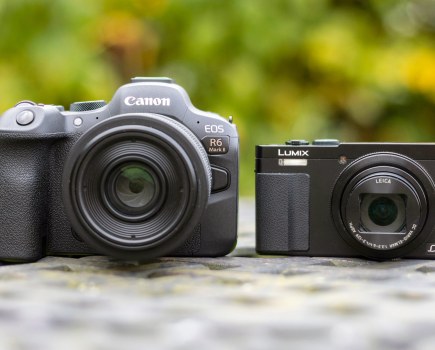The best value macro lenses let you capture ultra-close-up images for less. The ability to get in close with your camera allows for product and table top photography too, so it’s a win-win situation. Geoff Harris and the AP team provide great value options for every mount. You should be familiar with the great accessories available to support your work, too.
Macro photography has a reputation for being expensive – but it absolutely doesn’t have to be. Regardless pf tje camera system you’re using, there are affordable macro lenses out there that can produce superb close-up shots for a fraction of the price of the flagship lenses, even for newer mirrorless systems. It’s just a matter of finding them.
This can involve some thinking outside the box – whether by investigating third-party manufacturers such as Venus Optics, the maker of Laowa lenses, or by skipping back a few generations and picking up an older lens on the second-hand market. Often it can mean compromise, but in macro this can be less painful than in other genres, as there are many features common to high-end lenses that close-up photographers don’t really need. Image stabilisation is one, as macro photography is often conducted on a tripod, but perhaps even more significant is autofocus. Many cheap third-party macro lenses simply don’t bother with it, as macro is predominantly done using manual focus.
(For more insights, check out our comprehensive guide to macro photography)
We’ve picked out terrific macro lenses for both mirrorless and DSLR systems, with options for all the major mounts in use right now. All available for around $500 or £500, and in some cases, quite a bit less. Our list includes both new and used lenses – check out our guide to the best second-hand DSLR lenses for tips on buying used gear.
Before we get into it, let’s look more closely at what makes for a good macro lens…
How to choose a macro lens
Put simply, macro is the art of extreme close-up photography – of taking tiny subjects and rendering them as large as possible in the frame of your image. Ideally, a true macro lens will give you a 1:1 reproduction ratio of the subject in your photograph to allow you to do that. In other words, if your subject is a 15mm wide flower, you’ll want it to appear 15mm long on the imaging sensor of your camera.
Always check the reproduction ratio when buying a macro lens. You want at least a 1:1 ratio, though some lenses go beyond this and offer ratios of 2:1 or more. Others will offer a lower ratio, perhaps of 1:2 (also referred to as 0.5x). These won’t give you as close a view as ‘true’ macro lenses, but can still be useful for close-up and product photography. Subjects such as jewellery, constructed still-lifes by window light at home, and floral studies don’t need you to get in so close. Another benefit of this lens type is that they often cost less, too.
Most macro lenses have focal lengths of 100mm or under and typically have maximum apertures of around f/2.8. An aperture of around f/2.8 will help for shooting macro if you want to have a shallow depth of field and effectively isolate the main subject from its background. If you deliberately want to keep more of the background in focus, you’ll want the option of a lens that offers you different aperture settings, say of f/16 or f/22.
Also, consider whether you want an autofocus lens or a manual focus lens. Most AF systems in cameras are now incredibly sophisticated at recognising and tracking subjects, even when hand-holding a camera. However, in a more controlled environment with a tripod, you might want to have the flexibility of manually focusing.
Whatever your criteria for choosing a lens to get you in close, we’ve scoured our test reports and the market to bring you the best value macro lenses.
Why you can trust Amateur Photographer
We spend many hours testing every product we recommend, in detail, in a variety of situations and shooting scenarios, and only use experts for our reviews, so you can be sure that you’re getting the best products. Find out more about our expert writers.
The best value macro lenses: quick list
Looking for the best deal on lenses for macro photography? Not only will you find the best macro lenses, but also some of the best deals for macro lenses, as our ‘Buy now’ buttons are setup to automatically take you to the best prices from trusted retailers. You’ll also find a list of other retailers below each lens, so you can find the right deal for you.
- Laowa 85mm f/5.6 2x Ultra Macro APO – buy now
- Panasonic Lumix S 100mm F2.8 Macro – buy now
- Laowa CF 65mm f/2.8 2x Ultra Macro APO lens – buy now
- Sigma 105mm F2.8 DG DN Macro Art – buy now
- Tamron SP 90mm F/2.8 Di VC USD Macro – buy now
- Olympus M.Zuiko Digital ED 60mm F2.8 Macro – buy now
- Samyang 100mm F2.8 ED UMC Macro – buy now
- Sigma 70mm F2.8 DG Macro Art – buy now
- Irix 150mm Macro 1:1 f/2,8 Dragonfly– buy now
- Tokina atx-i 100mm F2.8 FF MACRO PLUS – buy now
- Laowa 100mm f/2.8 2x Ultra Macro APO – buy now
- Laowa 25mm f/2.8 2.5x–5x Ultra Macro – buy now
- Nikon AF-S DX Micro NIKKOR 85mm f/3.5G ED VR – buy now
- Sigma MACRO 105mm F2.8 EX DG OS HSM – buy now
Read on to learn more about each of these lenses. For something more high-end, don’t miss our full guide to the best macro lenses for mirrorless and DSLRs, where we explore professional options as well as the cheaper stuff.
The best value macro lenses: our full list
Here is our full list of the fifteen best value macro lenses. We’ve included many third-party lenses in this guide as well as manufacturers’ own-brand optics. We’ve also made sure that every contemporary lens mount is represented more than once; so you’ll have multiple options to choose from, regardless of the system you use.
Laowa 85mm f/5.6 2x Ultra Macro APO

At a glance:
- Mounts: Canon RF, Leica M, Nikon Z, Sony E, L-Mount
- Price: $499 / £499
Not content with the standard 1:1 magnification, this lens from Laowa offers 2:1 magnification, letting you get even closer to your subject. This is one of the newer macro lenses we’ve tested, but even at full price andis a solid budget addition to a full-frame lens collection.
This is an incredibly small and light lens, weighing just 219g – Laowa managed this by trimming the maximum aperture down to f/5.6, correctly reasoning that most macro shooters tend to stop down for increased depth of field anyway. So while you’ll struggle to get shallow depth of field, the Laowa 85mm f/5.6 2x Ultra Macro APO is still an excellent lens to drop into a bag and have at your disposal.
What we like:
- Incredibly portable
- Good optical quality
- Smooth handling
What we don’t like:
- f/5.6 won’t be for everyone
- No electronics
Read our Laowa 85mm f/5.6 2x Ultra Macro APO review
Panasonic Lumix S 100mm F2.8 Macro
At a glance:
- Mounts: L-mount
- Price: $798 / £999
One of the pricier macro lenses on our list, the Panasonic Lumix S 100mm F2.8 MACRO certainly delivers the goods. Its small in size and lightweight; achieving 1:1 magnification on full-frame from such a portable lens is a revelation. Other compact macro lenses have shorter focal lengths, which usually means claustrophobic working distances and less attractive perspective.
The Lumix S 100mm F2.8 Macro is a fantastic lens from Panasonic that redefines what a short telephoto macro can be. Much easier to carry around than any comparable optic, with no evident compromise in optical quality.
What we like:
- Small and lightweight
- Useful 1:1 magnification
- Extremely good performance
- Fast, quiet and precise autofocus
What we don’t like:
- Its price
- Relatively short working distance of 1:1
Read our Panasonic Lumix S 100mm F2.8 macro
Laowa CF 65mm f/2.8 2x Ultra Macro APO

At a glance:
- Mounts: Sony E, Fujifilm X
- Price: $399 / £429
Whilst some specialist ultra macro lenses only offer close-up focus, the Laowa 65mm f/2.8 2x Ultra Macro can focus to infinity. The lens has a manual aperture ring, and you’ll need to get used to using manual controls, as the lens does not have an electronic connection to the camera.
Like all Laowa lenses, this is a manual-focus lens, with no electronics to speak of. It is designed for APS-C mirrorless cameras, and is available in Sony E-Mount, as well as Fujifilm X-Mount. It weighs just 335g.
What we like:
- Impressive magnification available
- Excellent image quality
- Relatively small and lightweight
What we don’t like:
- No weather sealing
Read our Laowa 65mm f/2.8 2x Ultra Macro APO review
Sigma 105mm f/2.8 DG DN Macro Art
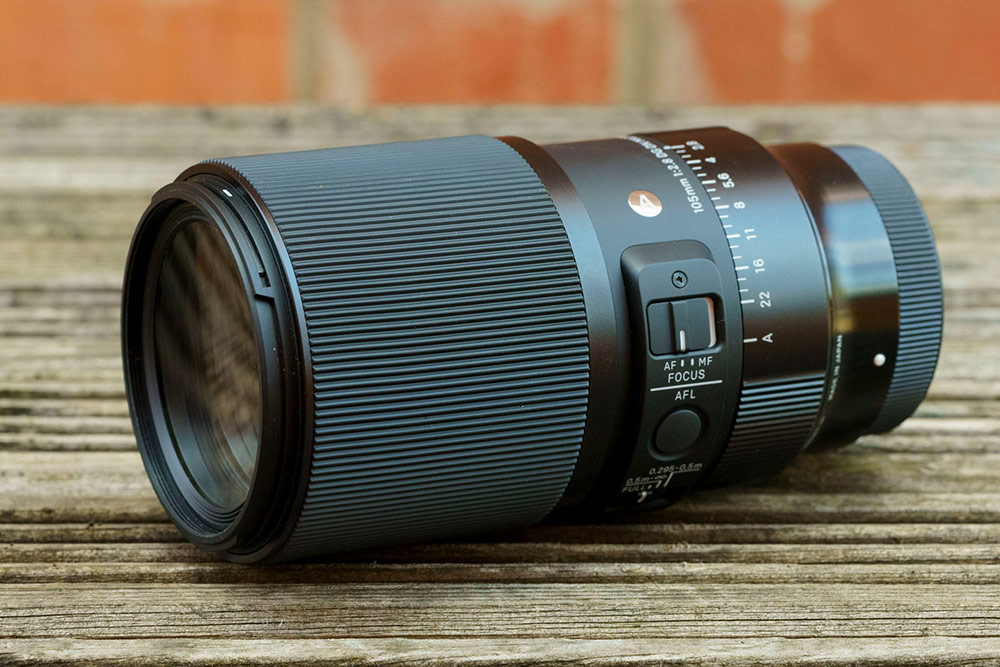
At a glance:
- Mounts: Sony E, L-mount
- Price: $789 / £729
Sigma’s Art series of lenses has drawn great acclaim and the 2021-released 105mm f/2.8 DG DN Macro Art raises the bar even further. Built for Sony E-mount and L-mount cameras (Panasonic full-frame, Sigma and Leica), this lens is a little weighty at 715g, but is all about one thing – premium image quality that will find appeal from professional image-makers who make their living with a camera. With this in mind, the $799 / £699 price-tag, while more expensive than many others in this shortlist, is actually incredibly good value for money when compared to rival optics.
Benefitting from a high level of weather sealing that resists dust and moisture, the lens features a focus limiter and an aperture de-click switch, which widens the lens’ appeal to videographers who want to capture close up footage but want to be able to adjust the exposure during the take with recording any clicks from the lens.
What we like:
- Premium image quality
- Weather sealing
- De-click aperture switch
What we don’t like:
- Costlier than others
- No stabilisation
Read our Sigma 105mm f/2.8 DG DN Macro Art review.
Tamron SP 90mm F/2.8 Di VC USD Macro

At a glance:
- Mounts: Canon EF, Nikon F, Sony A
- Used price: around $420 / from £300
Tamron has a long history in making great macro lenses and the SP 90mm is no different. A high-performance all-rounder for Canon EF, Nikon F, and Sony A-mount, it boasts a number of key functions that will make a real difference out in the field. The build of the lens features weather sealing to keep out moisture and dust, meaning you shouldn’t have to worry using this lens in harsh conditions.
The front element of the lens benefits from a fluorine coating that helps repel water and oil, and the build of the lens is backed up by a five-year warranty. The SP 90mm, which comes in fitments for most DSLRs, includes Tamron’s VC (Vibration Compensation) technology, which will help keep shots steady. You may need to track one of these second-hand, as they have now been officially discontinued.
What we like:
- Impressive build quality
- Credible warranty
- Decent price-tag
What we don’t like:
- Getting hard to find
- Only available for DSLRs
Olympus M.Zuiko Digital ED 60mm F2.8 Macro
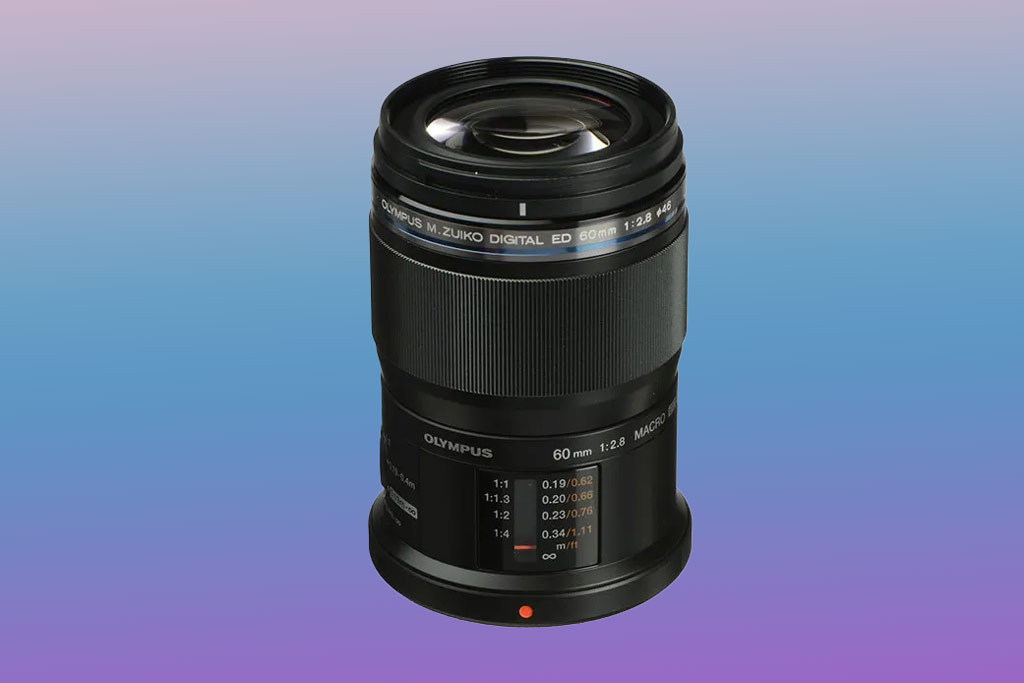
At a glance:
- Mounts: Micro Four Thirds
- Price: $400 / £330
Photographers using Micro Four Thirds cameras such as the Olympus OM-D E-M5 Mark III or the Panasonic Lumix GH6 have an integrated advantage when it comes to shooting macro imagery. That’s because the sensor in their cameras features a 2x crop, doubling the effective focal length of a lens, meaning the optics can be smaller, lighter and more affordable.
This is the case with the ED 60mm F2.8 Macro, which, of course, gives a full-frame equivalent focal length of 120mm and tips the scales at just 185g. With a fast maximum aperture of f/2.8, the lens can also be used to capture portraits with a shallow depth-of-field and the optic can focus as close as 19cm away from a subject.
Also, consider the Olympus M.Zuiko Digital ED 30mm F3.5 lens with 1.25x magnification, available from around $250 / £269, or the Panasonic LUMIX G Macro 30mm f/2.8 Asph. Mega O.I.S. lens for around $298 / £269.
What we like:
- Lightweight and portable
- Fast maximum aperture
- Weather sealing
What we don’t like:
- No built-in stabilisation
Find out more about the best Micro Four Thirds lenses.
Samyang 100mm F2.8 ED UMC Macro

At a glance:
- Mounts: Canon EF, Nikon F, Pentax K, Sony A, Canon EF-M, Fujifilm X, Sony E, Micro Four Thirds
- Price: $420-549 / £435-475 depending on mount
A lot of photographers prefer to use manual focus when capturing close up imagery, so it makes sense to save some budget and select a manual focus lens instead. One such example is the Samyang 100mm F2.8 ED UMC Macro, which is available in a large number of mount fits including Canon EF, Pentax K, Canon M and Fujifilm X.
While autofocus is missing from the lens, there’s plenty of other features, including the 15-elements, 12-groups optics design that includes a high refractive lens (HR) and extra low dispersion lens (ED) to minimise colour aberration and improve overall image quality. Also important is the 9-bladed aperture design as its shape will create attractive bokeh when used at the large f/2.8 maximum aperture.
What we like:
- Large focus ring
- Simple design
- Decent price tag
What we don’t like:
- No autofocus
Sigma 70mm F2.8 DG Macro Art
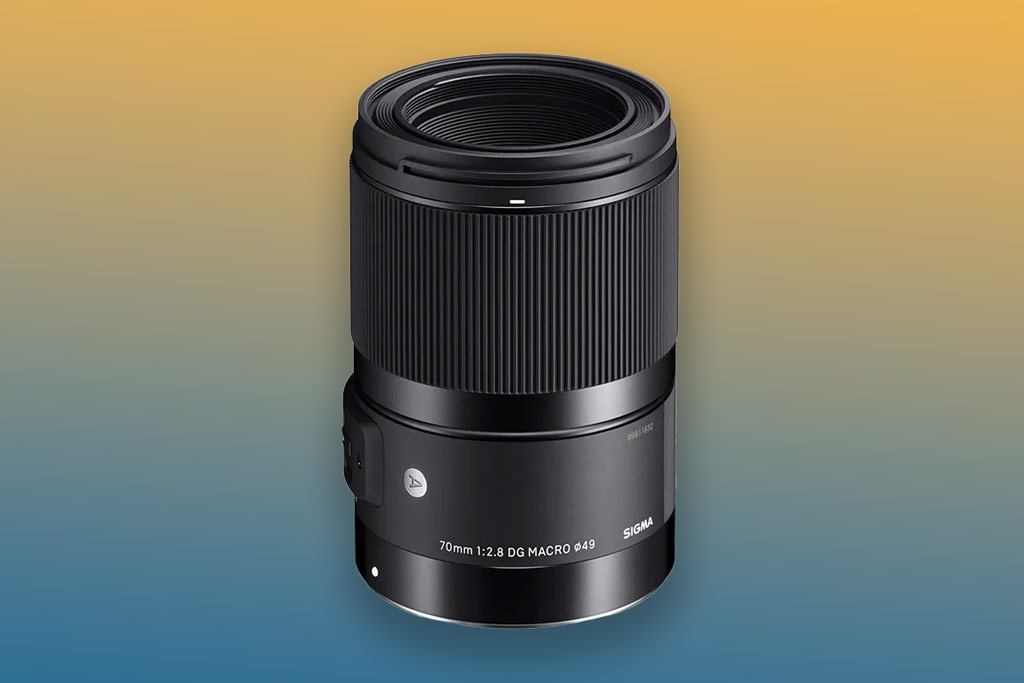
At a glance:
- Mounts: Canon EF, Sony E, Sigma SA, L-mount
- Price: $455 – $530 / $365 – £450
The 70mm F2.8 DG Macro was the first ever macro lens to join Sigma’s acclaimed Art series line up and is a stonewall classic thanks to its excellent build, superb image quality and reasonable price tag. Available for Canon EF and Sony E-mount, amongst others, the 70mm can be paired with Sigma’s 1.4x or 2x teleconverters should you need even more focal length and is also future-proof, as it can be connected up with Sigma’s USB dock should you need to update the firmware.
As you’d expect from Sigma’s Art series, the 70mm F2.8 DG Macro offers excellent image quality, thanks in part to the two FLD glass elements and two SLD glass elements used in the construction, which keep images sharp, even when the lens is used at is maximum aperture of f/2.8. The short telephoto length also has the benefit of a nice perspective and friendly working distance in product photography too.
What we like:
- Affordable price
- Premium build quality
- Future-proof features
What we don’t like:
- Not fully weather sealed
Irix 150mm Macro 1:1 f/2,8 Dragonfly
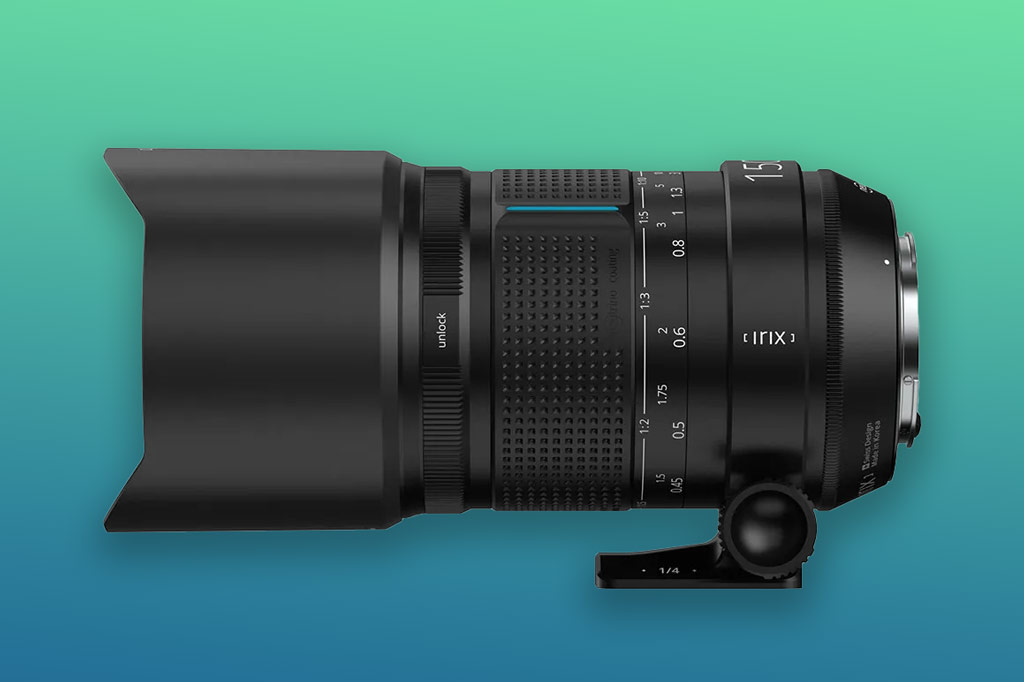
At a glance:
- Mounts: Canon EF, Nikon F, Pentax K
- Price: $395 / $380-£650 depending on mount
Available for Canon, Nikon and Pentax DSLR mounts, the Irix 150mm is growing a reputation as a genuine alternative to brand-made optics. This is, in part, to the fact that the lens boasts both a 1:1 magnification ratio and a 150mm focal length – this allows photographers the ability to shoot true-to-life, frame-filling images from a distance, which is particularly useful when shooting subjects like butterflies, who will flutter off if you get too close.
There’s no autofocus, but many photographers prefer to rely on manual focus when capturing close-up imagery anyway. The Irix also benefits from a weather-sealed build and also features a tripod collar, should you want to work with a tripod or monopod support.
What we like:
- Extended focal length
- Tripod collar
- Weather sealing
What we don’t like:
- No autofocus
Tokina atx-i 100mm F2.8 FF MACRO PLUS

At a glance:
- Mounts: Canon EF, Nikon F
- Price: $399 / from £400 (used)
While Tokina is perhaps not as well known as Tamron or Sigma, the atx-i 100mm F2.8 FF MACRO PLUS offers photographers a whole lot of lens for your money. This optic is available for Canon and Nikon full-frame DSLRs, but can also be used with crop sensor DSLRs from these brands where the effective focal lengths switches up to 150mm (160mm for Canon).
Boasting a focus limiter, which will help speed up focusing when compositing subjects closer to the lens, the Tokina also sports an innovative focus clutch where the photographer pushes and pulls a barrel ring to switch from autofocus to manual focus and this allows for a rapid transition between the two modes. The combination of a 1:1 magnification ratio and a very close minimum focusing distance of 30cm will enable you to capture frame-filling images of small subjects. You may need to try and track one of these used as these can be hard to find at the moment.
What we like:
- Innovative focus clutch
- Great value for money
- Close minimum focusing distance
What we don’t like:
- DSLR fit only
- Can be hard to find
Laowa 100mm f/2.8 2x Ultra Macro APO

At a glance:
- Mounts: Canon EF, Nikon F, Pentax K, Canon RF, Nikon Z, Sony E, L-mount
- Price: $499 / £569
Venus Optics produces a whole family of Ultra Macro lenses with a unique trick, in that they offer 2x magnification while still focusing to infinity. The 100mm f/2.8 is designed for full-frame DSLR cameras and is available in Nikon F, Pentax K and Canon EF mounts, with the latter coming in two versions with a choice of manual or electronic aperture setting. The lens has also been adapted for full-frame mirrorless.
The minimum focus distance is just 24.7cm, and colour fringing is suppressed thanks to the apochromatic design. Despite the enhanced close focus, the size and weight are similar to conventional 100mm macro lenses.
What we like:
- Impressive magnification available
- Excellent image quality
- Choice of mount
What we don’t like:
- No stabilisation
Laowa 25mm f/2.8 2.5x–5x Ultra Macro
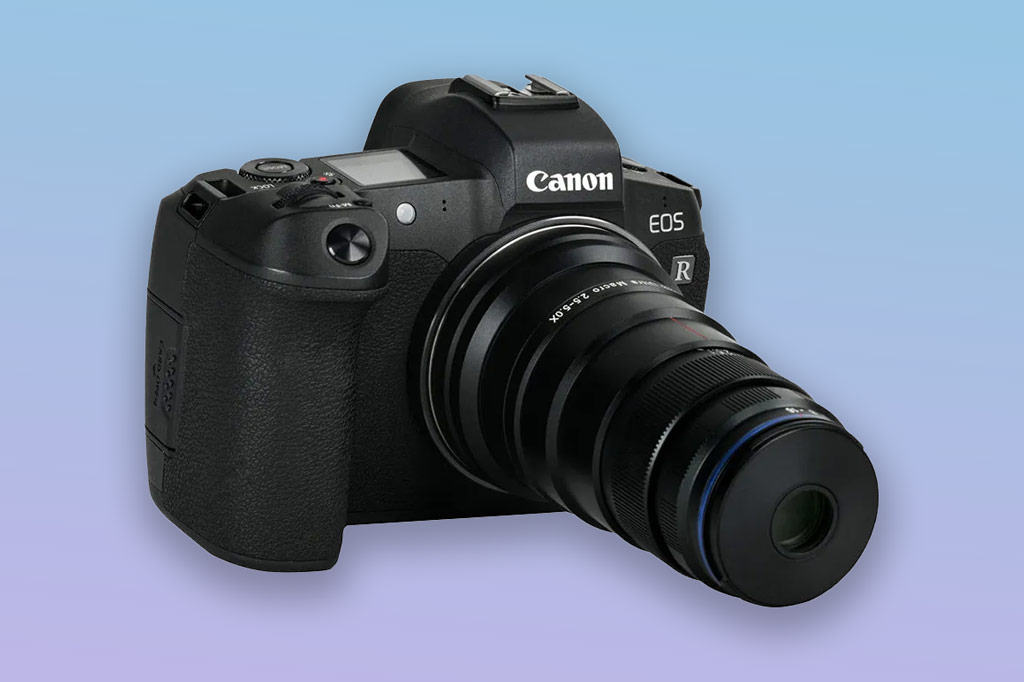
At a glance:
- Mounts: Canon EF, Nikon F, Pentax K, Canon RF, Nikon Z, Sony E, L-mount
- Price: $399 / £429
For serious devotees of close-up photography, this unusual lens provides ultra-high magnification at a remarkably low price. Unusually, it doesn’t focus to infinity, but instead provides between 2.5x and 5x magnification across a focus distance range of 17.3cm to 23.4cm. It requires both manual focus and aperture operation, and is generally best used on a tripod fitted with a macro rail.
The slimline, tapered barrel is specially designed to minimise shadowing of your subject. The optics cover full frame sensors, and the lens comes in plenty of mounting options for full-frame DSLRs and mirrorless cameras.
What we like:
- Impressive magnification available
- Intelligent design
- Choice of mount
What we don’t like:
- Requires some practice to operate
Nikon AF-S DX Micro NIKKOR 85mm f/3.5G ED VR
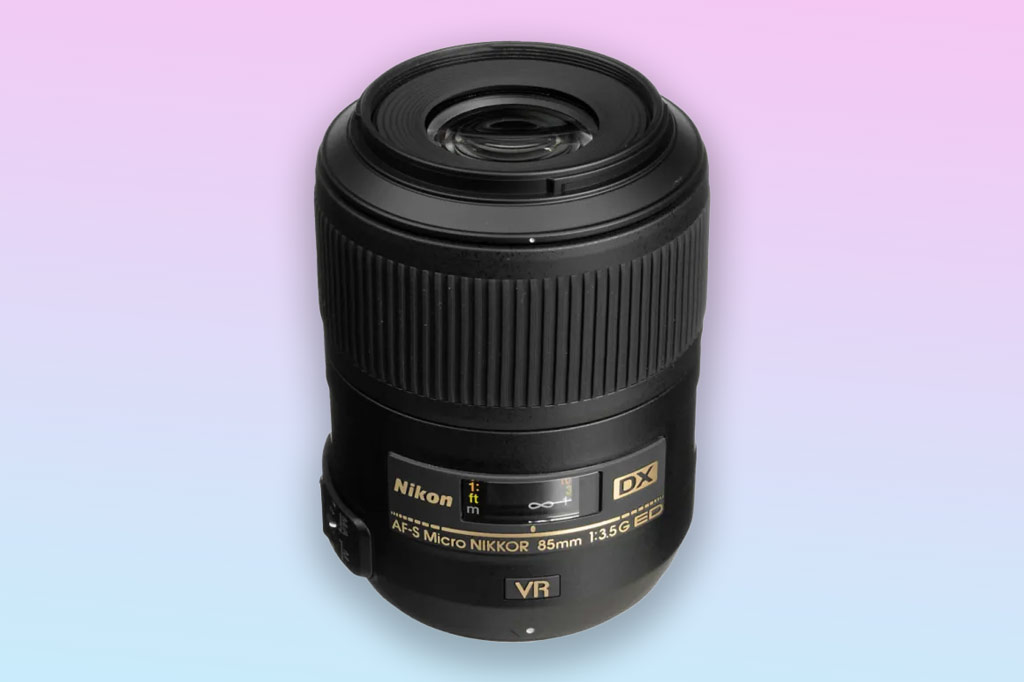
At a glance:
- Mounts: Nikon F
- Price: $557 / £459
Designed specifically for Nikon’s DX format (APS-C) DSLRs, this lens offers an unusually long 128mm-equivalent focal length. It’s packed full of attractive features, including a silent wave motor that promises quiet, precise autofocus, and optical image stabilisation.
At its minimum focus distance of 28.6cm it can focus on subjects measuring 24x16mm, which is equivalent to 1.5x magnification in full-frame terms. The 9-blade aperture promises attractive bokeh and stops down to f/32 for extended depth-of-field. For those on a tighter budget, there’s also a Nikon AF-S DX Micro Nikkor 40mm f/2.8G for just $277 / £299.
What we like:
- Optical stabilisation
- Great value for money
- Made for DX cameras
What we don’t like:
- Might be too telephoto for some
Sigma 105mm F2.8 EX DG Macro OS HSM
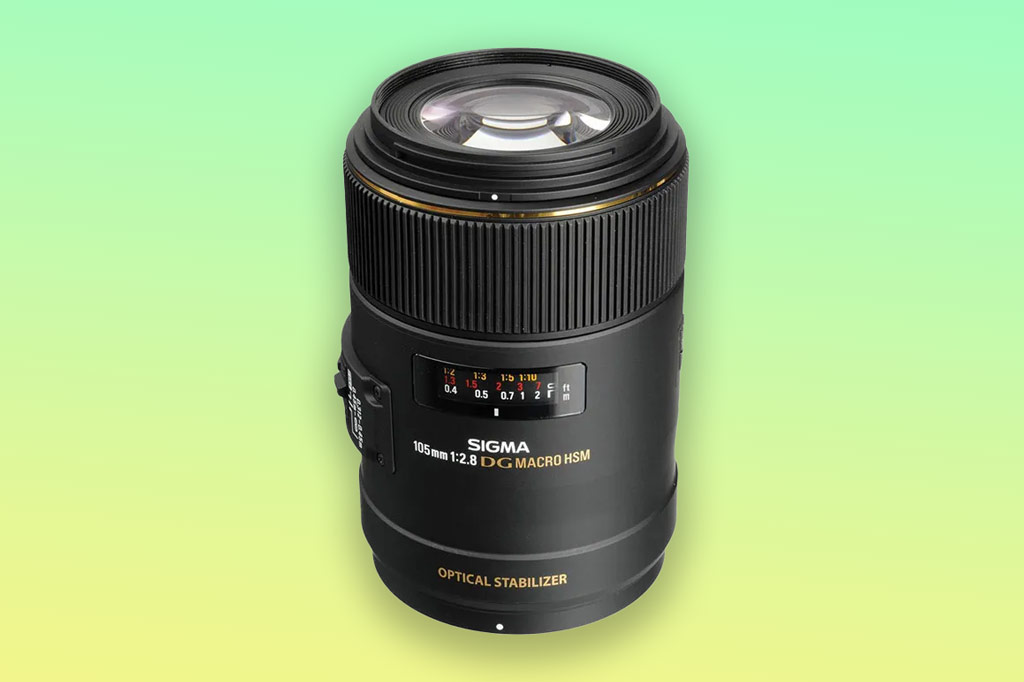
At a glance:
- Mounts: Canon EF, Nikon F, Sigma SA
- Price: $659 / £399
Long one of our favourite lenses, for many years this was our go-to option for testing the resolution of DSLRs, due to its superb sharpness. Available in Canon EF, Nikon F and Sigma SA mounts, it provides a comprehensive feature set at a very tempting price.
You get an ultrasonic-type autofocus motor that enables full-time manual override, along with optical stabilisation that’s good for up to four stops of shake reduction. An inner focusing system means that the length doesn’t change on focusing from infinity down to its 31.2cm minimum, at which point the lens provides life-size magnification.
What we like:
- Superb sharpness
- Optical stabilisation
- Great value for money
What we don’t like:
- Has since been upgraded
Best value macro lenses – frequently asked questions
Here, we answer a few of the common questions we hear about macro photography, and macro lenses in specific.
What focal length is best for macro?
As long as a lens has the 1:1 reproduction ratio (or near to) that’s required to get highly detailed close-ups, it can be any focal length you like. Macro lenses can come in wide focal lengths like 25mm, or long focal lengths like 105m, or somewhere in between at a standard focal length of around 50mm.
The key to figuring out the best focal length for you is to think about your working distance – i.e. how close you will be to your subjects. Telephoto macro lenses are popular partly because that they allow you to maintain a distance away from a subject. This is useful for a few reasons. For one, if you’re photographing insects in the garden, you don’t want to get too close to them lest you scare them away. Secondly, cramming a lens right up to a subject serves to block out available light. A bit more distance gives you more space to use your own lighting equipment if you want to.
This might make it seem like telephoto lenses are the obvious choice. However, they are also physically larger than wide-angle lenses, and more difficult to keep steady when you’re handholding. Generally, you’re going to have to use a tripod for telephoto macro shots, so if you do want to hand-hold (say, you plan to stroll around the garden) then a standard or even wide macro lens could be the way to go. The shorter working distance of wider lenses also means you can get really, really close to your subjects, and fill the frame with unusual perspectives.
Why are macro lenses so expensive?
As we’ve seen, macro lenses don’t have to cost mega bucks, but pound for pound they are still generally more expensive than other lens types. This is because they tend to use very high-quality optical elements to compensate for any optical imperfections introduced by the magnification effect.
Can a macro lens be used for normal photography?
Most certainly! Macro lenses are constructed with close-ups in mind, but they can still be used in other genres of photography including portrait, travel and product photography, and will consistently produce excellent images. Generally, dedicated macro lenses are not at their best when shooting distant subjects, so you probably wouldn’t use one to shoot conventional wildlife or sports imagery. Otherwise, you’re good to go.
If you want to know more, check out our top macro and product photography tips to make the most of your close focusing lens. Also, take a look at our ‘further reading’ list below to discover more of our great macro content.
How we test lenses
We review lenses from the perspective of choosing one for its photography and video performance, so we test each lens for all aspects of image quality: sharpness, contrast, background blur and bokeh, as well as other image qualities that are pertinent to assessing a type of lens. We look at whether the lens suffers from optical aberrations such as chromatic aberration and distortion. We test focus performance for both accuracy and speed (in different lighting conditions), as well as how the lens delivers or renders images. This is tested in a range of shooting scenarios designed to expose lens characteristics, but we also examine how it performs in real world use in diverse shooting situations.
Beyond the pure optical performance of the lens, we also assess the lens’ physical qualities: design, construction quality, ease of handling, and any unique or interesting features worthy of mention. Beyond image quality certain lenses can be assessed for how they make you feel, or how they may affect a camera system set-up for portability, compactness, weight etc.
Further reading:
- Best second-hand macro lenses
- Expert tips for award-winning macro shots
- Top macro photography tips
- Top 20 best close-up and macro photographs
- Top macro flower photography tips


